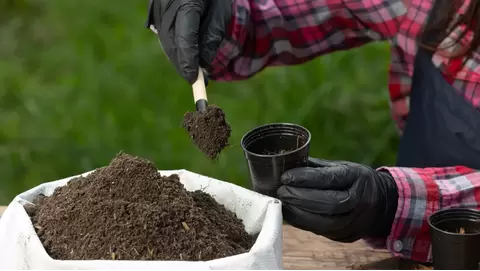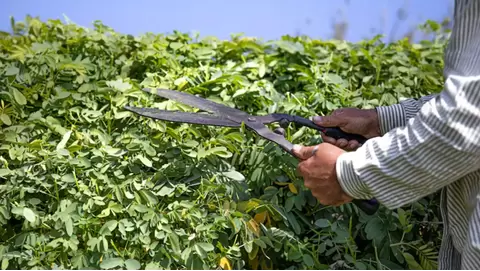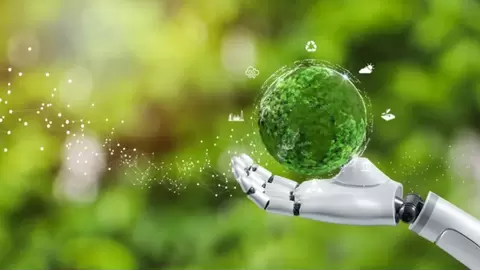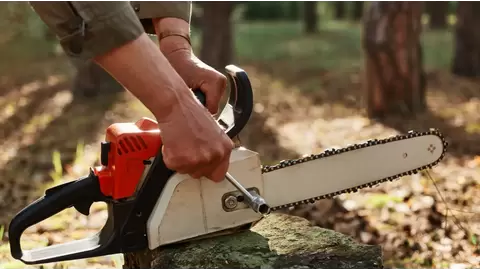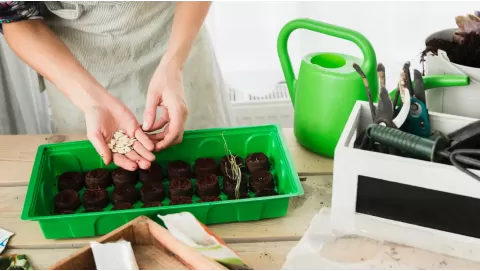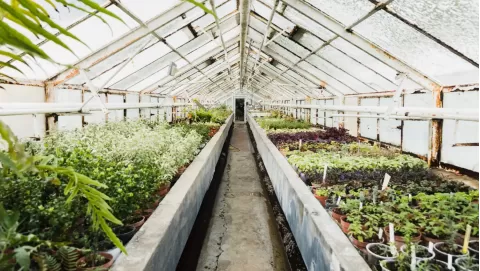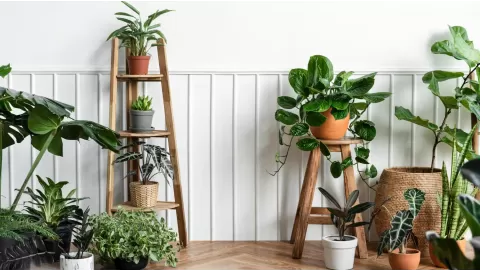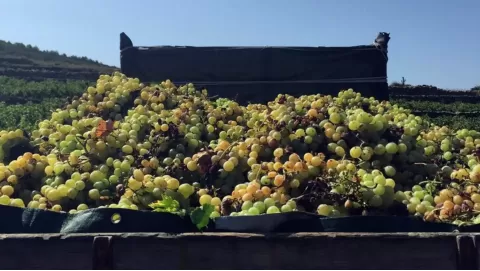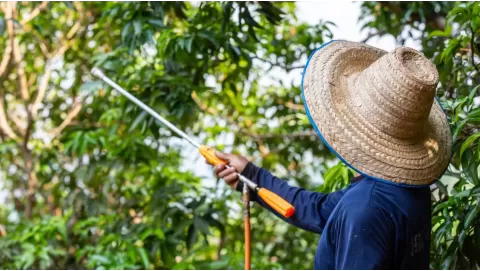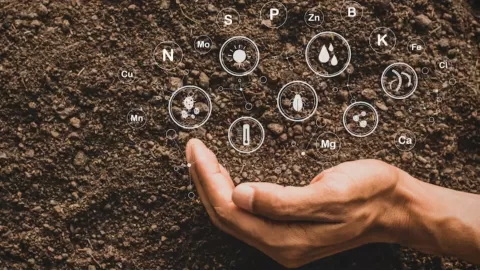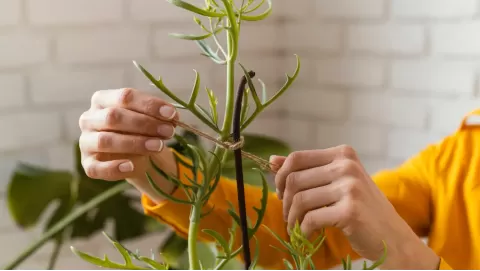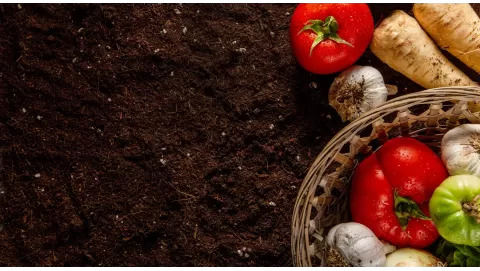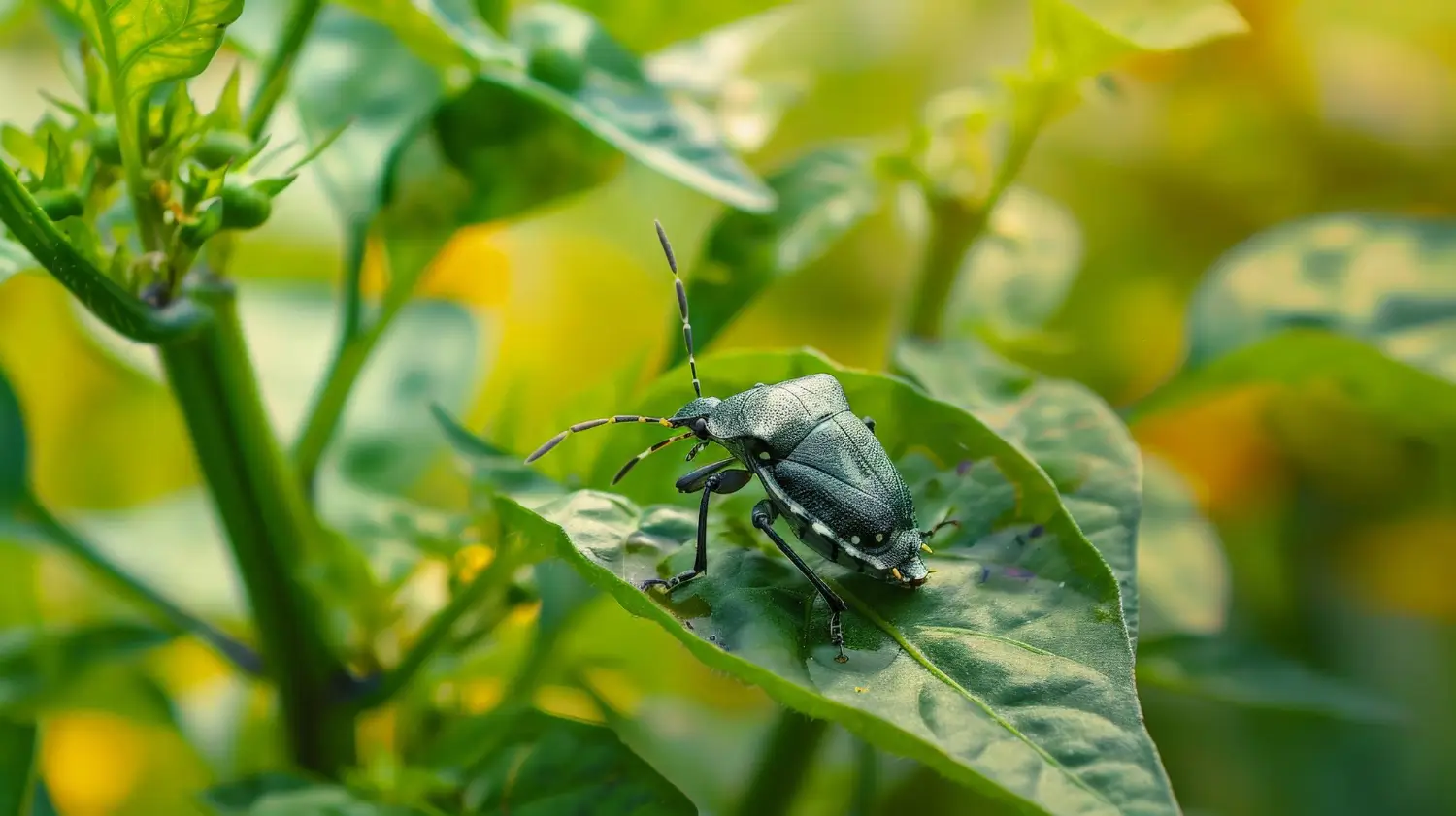
Organic pest control methods: sustainable solutions for outdoor and indoor farms
Pest control is an important part of farming because it helps keep crops healthy and ensures good harvests. However, many farmers use chemical pesticides, which can harm the environment, pollute water, and be dangerous to human health. Organic pest control relies on natural and eco-friendly ways to manage pests while keeping the soil healthy and protecting biodiversity.
Organic pest control is a major part of sustainable farming. This type of farming focuses on growing food in a way that protects nature and reduces the use of artificial chemicals. Farmers can control pests effectively by using natural predators, plant-based sprays, crop rotation, and other safe methods. More people today prefer organic farming and eco-friendly pest control.
Governments and agricultural organizations are also supporting sustainable farming by introducing rules and programs that encourage the use of organic pest control methods. Growcycle marketplace offers a variety of eco-friendly products and useful resources for gardeners and farmers who want natural solutions. These products target common garden pests like aphids, beetles, and caterpillars, helping plants grow strong and healthy.
Pest Challenges in Farming
Pests are a major problem for both outdoor and indoor farms, as they can damage crops, reduce yields, and threaten farm sustainability. Farmers must deal with various pests, including insects, rodents, fungi, and other harmful organisms that affect plant health.
Common Pests in Outdoor and Indoor Farms
- Insects: Aphids, caterpillars, beetles, whiteflies, and mites feed on plant leaves, stems, and roots, causing major damage.
- Rodents: Mice and rats eat seeds, roots, and stored crops, leading to food loss and contamination.
- Fungi and Diseases: Powdery mildew, blight, and root rot weaken plants, reduce yields, and spread quickly in humid conditions.
- Nematodes: These microscopic worms attack plant roots, making it difficult for crops to absorb water and nutrients.
Impact of Pests on Crops and Farms
Pests can cause severe harm to plants by eating leaves, sucking plant juices, spreading diseases, or damaging roots. This weakens the plants and reduces crop production. Farmers may lose a large portion of their harvest, affecting their income and food supply.
Some pests, like certain insects and fungi, multiply rapidly, making pest control more difficult. If not managed properly, pest infestations can force farmers to spend more time and money on solutions, reducing overall farm productivity.
Outdoor vs. Indoor Farm Pest Problems
Pests in outdoor farms are exposed to weather conditions. Heavy rains and winds can increase fungal infections, while droughts can attract pests looking for moisture.
Greenhouses and hydroponic farms face different pest issues. They can suffer from problems like spider mites, whiteflies, and fungal diseases, which spread quickly in humid, enclosed spaces. Poor ventilation and overwatering can create ideal conditions for mold and harmful bacteria.
Principles of Organic Pest Control
Organic pest control focuses on preventing pest problems rather than simply reacting to infestations. By maintaining healthy soil, encouraging biodiversity, and using natural pest management techniques, farmers can reduce the need for chemical pesticides. These principles help create a balanced ecosystem where crops can thrive while pests are kept under control naturally.
1. Prevention First
The best way to control pests is to prevent them from becoming a problem in the first place.
- Strong, nutrient-rich soil helps plants grow strong, making them more resistant to pests and diseases. Adding compost, organic fertilizers, and mulch improves soil health.
- A diverse farm environment with different crops, trees, and flowers attracts beneficial insects and reduces the spread of pests.
- Growing different crops in the same area each season prevents pests from establishing permanent populations. Many pests thrive when the same crops are grown repeatedly, so rotation disrupts their life cycles.
2. Integrated Pest Management (IPM)
Integrated Pest Management (IPM) is a sustainable approach that combines multiple organic methods to control pests. It focuses on monitoring pest levels, using preventive strategies, and applying organic treatments only when necessary.
- Farmers check plants regularly for early signs of pest infestations. Using traps and visual inspections helps detect problems before they become severe.
- Natural enemies of pests, such as ladybugs and predatory wasps, help keep harmful insect populations under control.
- Barriers like row covers, insect nets, and sticky traps prevent pests from reaching crops.
3. Natural Predators and Habitat Management
- Encouraging birds, frogs, and beneficial insects helps reduce harmful pest populations. Planting flowers like dill and marigolds attracts predatory insects.
- Some plants naturally repel pests or help neighboring crops grow better. For example, marigolds deter nematodes, while basil improves tomato health.
- Creating hedgerows, planting native flowers, and adding water sources attract helpful wildlife that feeds on pests.
Natural Pest Control Methods for Outdoor Farms
Outdoor farms often face a variety of pests that can damage crops and reduce yields. However, farmers can use many natural and organic methods to manage these pests while keeping the environment safe.
1. Biological Control
Biological control involves using natural predators to manage pest populations. Instead of relying on synthetic pesticides, this approach uses beneficial insects and animals that help keep harmful pests under control.
- Ladybugs are known for eating aphids, scale insects, and other soft-bodied pests.
- Lacewings target pests like aphids, thrips, and mealybugs.
- Parasitoid Wasps lay their eggs in or on pests like caterpillars and aphids, killing them in the process.
Birds, frogs, and other wildlife are also natural pest controllers. Farmers can create environments that attract these predators. For example, adding birdhouses, water features or planting shrubs can encourage birds and frogs to visit the farm. These creatures feed on insects, rodents, and even larger pests, helping keep pest populations in check.
2. Botanical & Organic Sprays
Botanical and organic sprays are safe and effective ways to manage pests without harming the environment. They are made from natural plant extracts or other non-toxic ingredients, providing a safer alternative to chemical insecticides.
- Neem oil is a natural pesticide derived from the neem tree. It disrupts the life cycle of insects by acting as a repellent, preventing them from feeding and reproducing. It works well against aphids, spider mites, and whiteflies.
- Pyrethrin, made from chrysanthemum flowers, is effective against many pests, including ants, fleas, and mosquitoes. It paralyzes insects, making it a quick solution for controlling pests.
- Diatomaceous earth is a fine powder made from fossilized algae. It damages the exoskeletons of insects, causing them to dehydrate and die. It is effective against ants, beetles, and other crawling insects.
- DIY Organic Sprays: Farmers can create their own organic sprays using simple ingredients.
3. Crop Rotation
Crop rotation involves changing the types of crops grown in a specific area each season. This prevents pests from becoming accustomed to a single crop and disrupts their breeding cycles.
For example, if a pest targets tomatoes, rotating them with crops that pests do not favor, like beans or lettuce, can reduce pest populations. Crop rotation also helps manage soil health, as different plants have different nutrient needs and can improve soil fertility.
4. Physical Barriers & Traps
Physical barriers and traps are effective ways to prevent pests from reaching crops. These methods are especially useful for managing specific pests that can be kept out through physical means.
- Lightweight fabric or mesh coverings can be placed over crops to protect them from flying insects like moths and aphids. Row covers also help maintain humidity levels and protect plants from extreme weather conditions.
- Sticky traps are often used for flying insects such as whiteflies, aphids, and fungus gnats. These traps attract pests with their color or scent and trap them on sticky surfaces.
- Pheromone traps use scents that mimic the mating signals of insects, attracting them into a trap. These are particularly useful for controlling moths and other pests with distinct mating behaviors.
Sustainable Pest Control for Indoor Farms
Indoor farms offer a controlled environment that can optimize plant growth, but they also face unique pest challenges. Since indoor environments are enclosed, pests can quickly multiply and spread if not properly managed. Sustainable and non-toxic pest control methods are essential for maintaining healthy crops while keeping the environment safe.
1. Biological Control in Controlled Environments
Biological control in indoor farms involves introducing natural predators or beneficial organisms to keep pest populations in check. Since indoor environments are typically more confined, these methods are often more effective when carefully managed.
- Predatory Mites: Predatory mites, such as Phytoseiulus persimilis, feed on spider mites, a common pest in greenhouses and hydroponic systems. These mites are safe for plants and provide long-term pest control without chemicals.
- Nematodes: Beneficial nematodes are microscopic worms that can be introduced into the growing medium to target soil-dwelling pests like root aphids, fungus gnats, and root weevils. They infect and kill pests, reducing their numbers without harming plants.
- Microbial Solutions: Beneficial microorganisms, like Bacillus thuringiensis (Bt), can be used to target specific pests. Bt is a natural bacterium that produces toxins that kill insect larvae, such as caterpillars and beetles, without affecting other organisms.
2. Environmental Controls
To prevent pest problems, it is essential to manage the environmental factors in greenhouses and hydroponic systems. Temperature, humidity, and airflow must be carefully controlled.
- Temperature Control: Many pests thrive in warm environments, so keeping the greenhouse or indoor farm at the optimal temperature for plant growth (but less favorable for pests) can help limit pest activity.
- Humidity Management: High humidity encourages the growth of mold, fungi, and pests like spider mites and aphids. Farmers can reduce the risk of pest infestations and fungal diseases by controlling humidity levels and ensuring proper ventilation. To prevent issues, humidity levels should be kept between 40% and 60%.
- Airflow and Ventilation: Proper airflow ensures that pests don’t get trapped in stagnant air, which can lead to mold or fungal growth. Fans or ventilation systems help circulate air, making it harder for pests to settle and reproduce.
3. Non-Toxic Sprays & Organic Solutions
Non-toxic sprays are essential for managing pests in indoor farming systems. They can help control pests without harming the plants or the environment.
- Essential Oils: Essential oils like peppermint, eucalyptus, and tea tree oil effectively repel pests. A diluted mixture of essential oils in water can be sprayed on plants to deter insects like aphids, whiteflies, and spider mites. These oils also have antifungal properties that help prevent disease.
- Vinegar Solutions: A simple solution of vinegar and water can be used to repel pests and clean plant surfaces. The acidity of vinegar helps deter insects, and it can also prevent mold buildup in humid environments.
- Plant-Based Sprays: Plant-based sprays, such as neem oil or pyrethrin (from chrysanthemums), effectively treat pest infestations. Without damaging the plants, these sprays can kill insects like aphids, thrips, and whiteflies.
Challenges & Limitations of Organic Pest Control
While organic pest control offers many benefits, it also presents several challenges that farmers must consider when adopting these methods.
1. Time Investment
Organic pest control methods often require more time and attention than conventional chemical treatments. Monitoring pest levels, introducing natural predators, or applying organic sprays can be labor-intensive.
2. Initial Costs
Many organic pest control solutions, such as beneficial insects, biopesticides, and organic sprays, may involve higher upfront costs. For example, purchasing predatory mites or nematodes can be expensive.
3. Pest Resistance
Although organic methods aim to reduce reliance on chemicals, pests can still develop resistance to certain organic treatments. For example, over-reliance on natural predators or microbial sprays can lead to pests adapting to these methods over time.
4. Balancing Effectiveness with Sustainability
Organic methods often work more slowly than chemical alternatives and may require repeated applications or continuous management. This can create a dilemma, as some methods may not provide immediate results, leading to concerns about crop damage or reduced yields.
Additionally, while organic pest control aims to be more sustainable in the long term, it requires a more hands-on approach and a commitment to ecosystem management, which can be difficult for farmers used to the simplicity of conventional methods.
Future Trends in Organic Pest Control
As the agricultural industry continues to evolve, several exciting trends in organic pest control are emerging that could change its future.
1. Developments in Biopesticides and Microbial Solutions
Biopesticides and microbial solutions are becoming more effective and widely used. These alternatives to chemical pesticides are increasingly being used to target specific pests without harming beneficial organisms. For example, the use of Bacillus thuringiensis (Bt) is being expanded to control a wider variety of pests.
2. AI and Smart Farming Technologies
The integration of artificial intelligence (AI) and smart farming technologies into pest management is set to revolutionize organic pest control. AI-powered sensors and drones are being used to monitor crops and spot early signs of pest problems. These tools can identify pests and send data to farmers, helping them act quickly and accurately. AI can also help track environmental conditions, like temperature and humidity, predict pest outbreaks, and guide farmers in taking preventive steps.
Smart farming technologies, such as automated pest control systems, allow farmers to use organic pest control methods more efficiently. These systems focus on specific areas of the farm, reducing the need for pesticides and cutting costs while protecting the environment.
3. The Role of Policy and Consumer Demand
Policy and consumer demand will also influence the future of organic pest control. As consumer awareness of sustainable farming practices continues to grow, the demand for organic products is expected to rise. This shift will encourage more farmers to adopt organic pest control methods to meet consumer expectations.
Governments are also offering more support for sustainable farming, making it easier for farmers to transition to organic methods. This support might include helping farmers get certified and promoting research into new pest control solutions. These changes could make organic farming more accessible and cost-effective for farmers, overcoming some of the current challenges.
FAQs
What is crop rotation, and why is it important?
Crop rotation involves changing the type of crops grown in an area each season. This prevents pests from getting used to a specific crop, disrupts their breeding cycles, and improves soil health.
How do physical barriers help with pest control?
Physical barriers, such as row covers and insect nets, protect crops from pests like moths and aphids. They also prevent insects from reaching the plants and can shield them from extreme weather.
What are botanical and organic sprays?
Botanical and organic sprays are made from plant extracts or non-toxic ingredients, such as neem oil and pyrethrin. They help control pests like aphids and mites while being safe for plants and the environment.
The Bottom Line
Organic pest control is a safe and eco-friendly alternative to traditional chemical methods. Farmers can use different strategies to manage pests and support biodiversity, keeping plants healthy and protecting the environment.
The future of organic pest control is bright. Improvements in natural pest solutions will help create a more sustainable and healthier farming system. Explore Growcycle to find the best organic pest control indoor and outdoor gardening products.
Disclaimer: This material is for informational purposes only and should not be relied on for legal, medical, financial, or any other form of professional advice.



